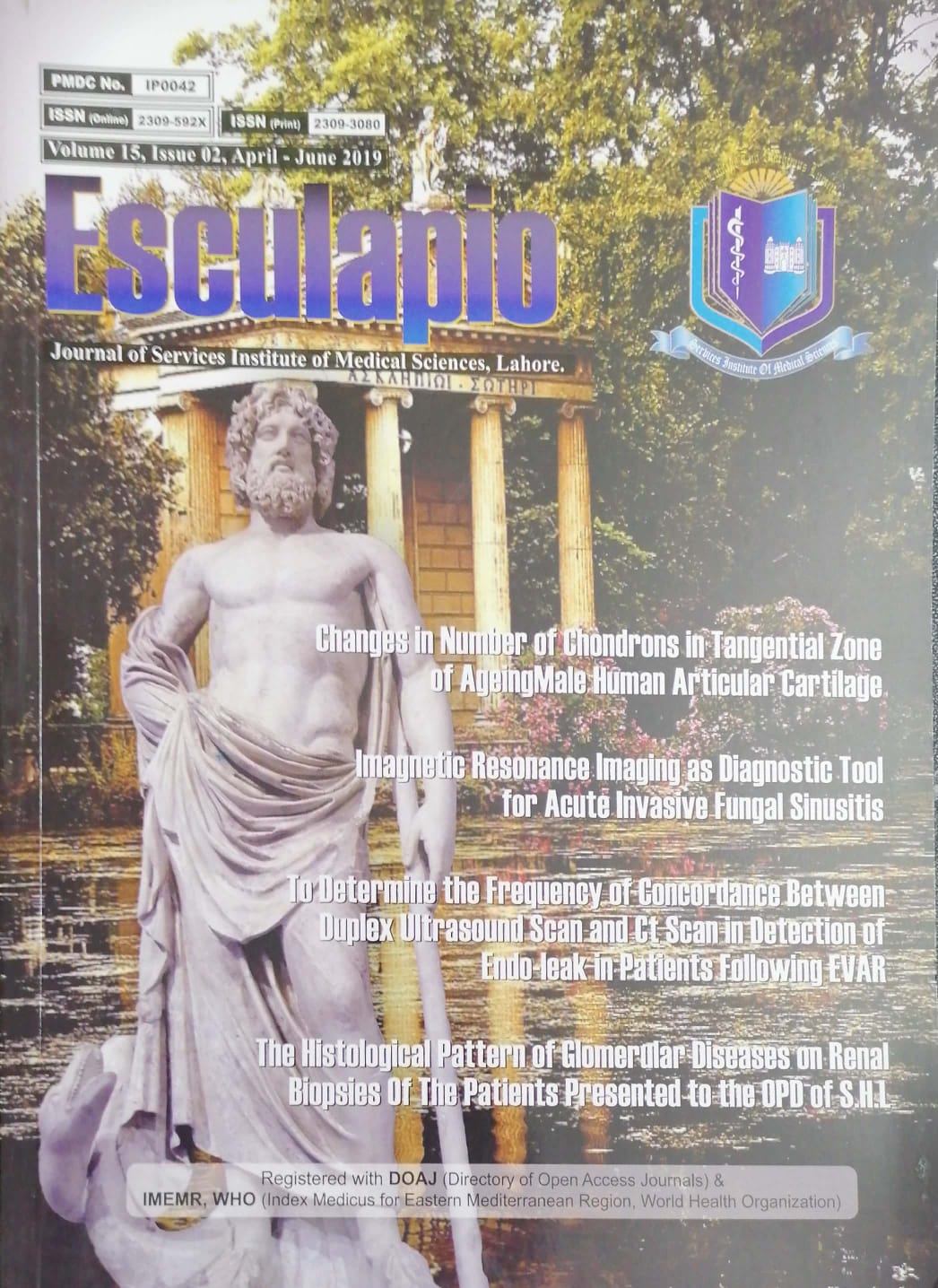Comparative Study Between two Techniques of Radiocephalic Fistula for Patients on Hemodialysis
DOI:
https://doi.org/10.51273/esc19.71525Keywords:
Radiocephalic, Arteriovenous Fistula, Hemodialysis (HD), End Stage Renal Disease (ESRD),, Chronic Kidney Disease (CKD)Abstract
Objective: To compare the patency rate and complications of two different surgical techniques
of radiocephalic arteriovenous fistula side to side anastomosis with distal vein ligation and without
distal vein ligation in patients who are on hemodialysis (HD) due to end stage renal failure.
Methods: This prospective study was carried out on total 468 patients over the duration of two
years. The fistulae were created between radial artery and cephalic vein, side to side
anastomosis. In one group distal vein was ligated to compare with the other one without distal vein
ligation. Patients were followed up to first dialysis by AVF to assess the overall outcomes and
various complications. Data of Follow up was collected for 6 months from patient's dialysis staff.
Results: 468 patients were included in study. Patients were divided in two groups i.e. Group-X
(without distal vein run off) and Group-2 (with distal vein run off). In group-1, patency rate was
171(73.1%), while 207(88.5%) patients in group-Y with a statistically significant p-value of
0.0001.
Conclusions: This study explained that there was a significant difference of patency rate and
complications between the radiocephalic fistula with and without distal vein run ligation. Hence
we will prefer distal vein run off in our setup in future










